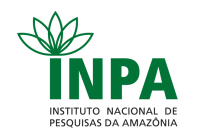Corpo Discente - Egressos
Leandro José Ramos
| Título | LEVANTAMENTO DA FAUNA DE TRIATOMÍNEOS E ANÁLISE DA INFECÇÃO POR TRIPANOSSOMATÍDEOS, NA FAZENDA EXPERIMENTAL CATUABA, MUNICÍPIO DE SENADOR GUIOMARD, ACRE, BRASIL | ||||||||||||||||||||||||
| Data da Defesa | 12/11/2018 | ||||||||||||||||||||||||
| Download | Em sigilo | ||||||||||||||||||||||||
Banca
| |||||||||||||||||||||||||
| Palavras-Chaves | Doença de Chagas, Trypanosoma cruzi, Trypanosoma rangeli e Amazônia Ocidental. | ||||||||||||||||||||||||
| Resumo | Dentre as enfermidades transmitidas por vetores, a doença de Chagas é uma das mais frequentes no Brasil. Os vetores são triatomíneos conhecidos como barbeiros, e o agente etiológico é o protozoário Trypanosoma cruzi. A enfermidade pode ocasionar lesões cardíacas, responsáveis pelo maior índice de morbidade e mortalidade da doença. Na região amazônica, houve aumento na intensidade de ocorrências de casos letais nos últimos anos. Dessa forma, o presente estudo objetivou realizar um levantamento da fauna de triatomíneos e analisar a infecção por tripanosomatídeos, na Fazenda Experimental Catuaba, município de Senador Guiomard, Acre, Brasil. Os triatomíneos foram coletados por busca ativa em peridomicílio e ambiente silvestre e por meio de armadilhas de interpectação de vôo e atração, de janeiro a dezembro de 2016. A identificação da infecção por tripanossomatídeos foi realizada por meio de análises a fresco em lâminas do conteúdo da ampola retal dos triatomíneos e posteriormente através de confirmação molecular. Seis espécies (Rhodnius robustus, Rhodnius pictipes, Rhodnius montenegrensis, Rhodnius neglectus, Panstrongylus geniculatus e Triatoma sordida) foram encontradas. Constatou-se dois novos registros de ocorrência de triatomíneos (Triatoma sordida e Rhodnius neglectus), para o estado do Acre e para a Amazônia Ocidental. Estes registros geraram alerta epidemiológico, visto que em outras regiões as espécies tem registro de domiciliação e ocorrência em residências. As espécies do gênero Rhodnius foram coletadas em palmeiras e dos gêneros Panstrongylus e Triatoma foram coletadas com busca ativa em peridomicílio. As espécies mais frequentes foram R. robustus e R. montenegrensis. Essas espécies no estágio adulto apresentaram mais de 70% de infecção por tripanossomatídeos. Majoritariamente, as infecções eram por T. cruzi, mas também foram encontradas infecções por T. rangeli, agente etiológico da Rangeliose Humana. A ocorrência de seis espécies em uma única área de estudo mostra o potencial local para estudos futuros e a necessidade de medidas de profilaxia para a transmissão vetorial da doença de Chagas e da Rangeliose Humana no Estado do Acre. | ||||||||||||||||||||||||
| Abstract | Among the diseases transmitted by vectors, Chagas` disease is one of the most frequent in Brazil. The vectors are triatomines known as barbers, and the etiological agent is the protozoan Trypanosoma cruzi. The disease can cause cardiac lesions, responsible for the highest morbidity and mortality rate of the disease. In the Amazon region, there has been an increase in the intensity of occurrences of lethal cases in recent years. Thus, the present study aimed to perform a survey of the triatomine fauna and to analyze the infection by trypanosomatids, at the Catuaba Experimental Farm, Senador Guiomard, Acre, Brazil. The triatomines were collected by active search in peridomiciliary and wild environments and by means of traps of interaction of flight and attraction, from January to December of 2016. The identification of the infection by trypanosomatids was carried out by means of fresh analyzes in slides of the content of the rectal bulb of the triatomines and subsequently through molecular confirmation. Six species (Rhodnius robustus, Rhodnius pictipes, Rhodnius montenegrensis, Rhodnius neglectus, Panstrongylus geniculatus and Triatoma sordida) were found. Two new records of the occurrence of triatomines (Triatoma sordida and Rhodnius neglectus) were found, for the state of Acre and for the Western Amazon. These records generated an epidemiological alert, since in other regions the species has register of domiciliation and occurrence in residences. Species of the genus Rhodnius were collected in palms and the genera Panstrongylus and Triatoma were collected with active search in peridomicillus. The most frequent species were R. robustus and R. montenegrensis. These species in the adult stage presented more than 70% of trypanosomatid infection. Infections were mainly caused by T. cruzi, but infections were also found by T. rangeli, the etiological agent of Human Rangeliosis. The occurrence of six species in a single study area shows the potential for future studies and the need for prophylaxis measures for vector transmission of Chagas` disease and Human Rangeliosis in the State of Acre | ||||||||||||||||||||||||
Parceiros

























